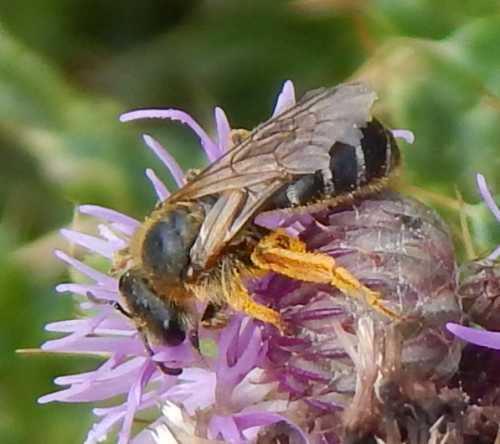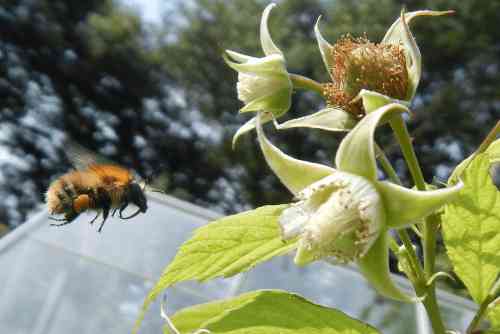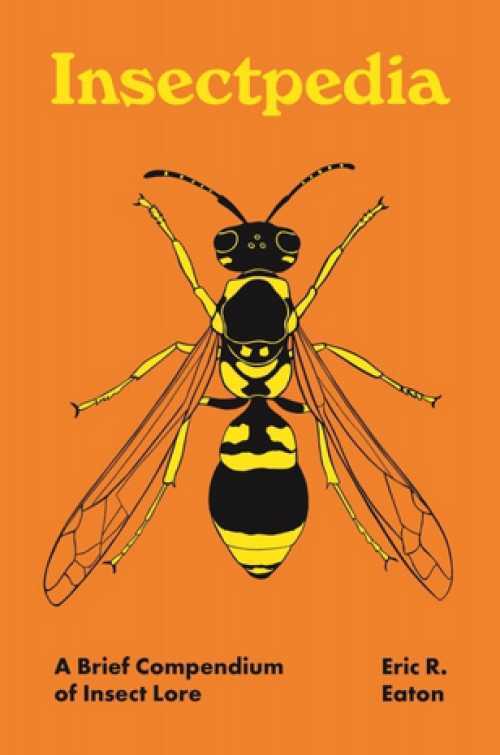Do Bees Lay Eggs?
Updated: December 2023
The short answer is:
Yes, all bees lay eggs (although not the males of course!). Most eggs are white and look a little like a grain of rice. However, depending on species, bee eggs can vary in size.
Eggs have a soft outer shell called a 'chorion', and this shell usually dissolves or is shed as the egg develops and hatches into a larva.
4 Fascinating Facts About Bees And Eggs
- The number of eggs laid by bees depends on the species. Honey bee queens lay many eggs - between 2,000 and 3,000 eggs per day whilst she is establishing her colony.
Through her active life she may lay a total of one and a half million eggs. - The queens of bumble bees and honey bees, and adult egg-laying solitary females, are the ones who determine whether their offspring will be male or female.
- For various reasons, some bee species may engage in egg-eating - that is, eating eggs soon after they have been laid.
- Male bees are born from unfertilized eggs, and as such, they have no father, but they do have a grandfather!
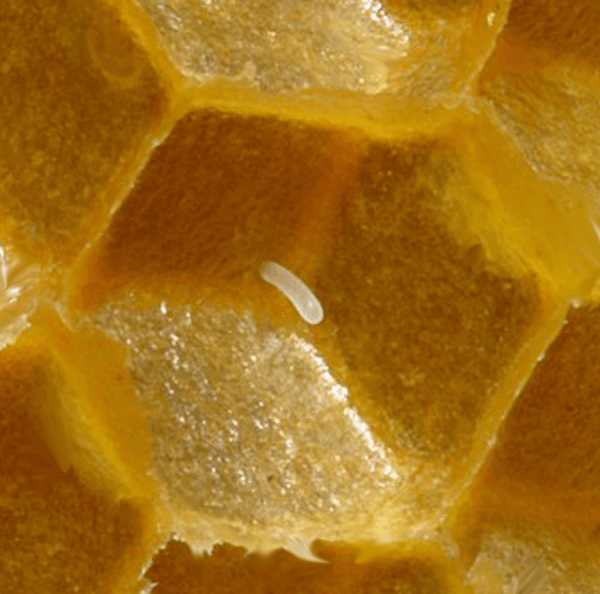 A honey bee egg in a wax cell.
A honey bee egg in a wax cell.Egg laying in bees
In solitary bee species, eggs are laid by the adult females, most of whom will not be present during the development of the eggs.
Instead, adult solitary species lay an egg in a cell which they provision with food, and then seal up the cell. The adult female will then die, and eggs will develop into the new offspring that will ensure future generations of bees1.
In cleptoparasite species, a female will lay an egg in the nest of a target host, and she will either destroy the offspring of the host herself, or her own offspring will do it once they hatch from the egg (depending on species). Other cuckoos, such as cuckoo bumble bee species, will lay eggs in the host's nest, and will use the workers of the original queen to help her rear them.
In social colonies of honey bees and bumble bees, the queen is the egg layer. The offspring will be tended by the workers.
When an egg is laid, the female or queen will control whether males or females are produced.
If a female is to be produced from an egg, an egg will be fertilized with sperm as it is released from the spermatheca.
Males are produced from non-fertilized eggs.
Below is a video recording of a queen honey bee laying an egg in a wax cell.
The footage was recorded by scientists (Siefert et al 20212) who were recording honey bee behaviours in a hive:
Haplodiploidy and diploidy
You may have heard that male bees have a no father, but they do have a grandfather.
This refers to the fact that male bees are born from unfertilized eggs, so that they have genetic material only from their mothers.
This is called haplodiploidy, and male bees are haploid.
Of course, the male bee still has a 'grandfather', because its mother was born from a fertilized egg.
Females are diploid - they are born from fertilized eggs, and hence inherit genetic material from their mother and their father.
Read more about this topic: Do Bees Have X And Y Chromosomes?
Egg laying workers - honey and bumble bees and egg eating
In colonies of bumble bees and honey bees, eggs are laid by the queens.
However, at various times, worker females may also lay eggs3.
Workers can only produce males - they cannot produce females, since they have not mated and therefore have no stored sperm with which to fertilize any eggs they may lay.
Bumble bees
In the later development of a bumble bee colony, the female workers that mostly remain in the nest (rather than foragers), may construct egg cells in which they lay eggs.
The queen may retaliate by eating these eggs, and then lay her own eggs in the wax cells4.
Further retaliation may occur, and the workers may in turn eat the queen's eggs. This kind of behaviour has been observed in a range of bumble bee species, and is suspected to be wide spread.
Egg eating can lead to conflict in the colony, with the result that the queen may even be killed by her own workers.
Read and watch a video about bumble bee eggs.
Honey bees
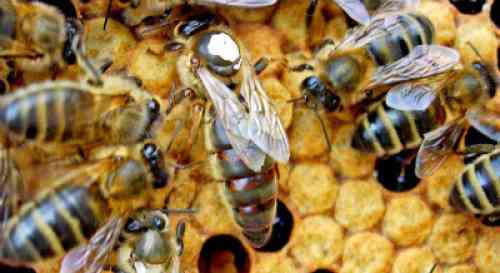
In a queenright honey bee colony (one where the queen has mated and is actively laying eggs), eggs laid by workers are usually destroyed - possibly eaten by other workers policing the hive.
However, honey bee workers may also begin laying eggs when there is no queen, or there is insufficient brood pheromone (and perhaps insufficient queen pheromone).
When workers are laying eggs, they deposit several eggs in one wax hexagonal cell, and often to the side or off-center.
(Queens mostly deposit only one per cell unless a newly mated queen is in the early stages of laying. Having a longer abdomen also enables her to deposit the egg in the center of the cell, rather than at the side).
Any eggs laid by workers can only produce drones.
Read more about egg laying in honey bee workers.
References
- Field Guide to Bees Of Great Britain And Ireland - by Steven Falk (Bloomsbury - British Wildlife Guide Series).
- Siefert P, Buling N, Grünewald B (2021) Honey bee behaviours within the hive: Insights from long-term video analysis. PLoS ONE 16(3): e0247323. https://doi.org/10.1371/journal.pone.0247323
- Rojek, W., Kuszewska, K., Ostap-Chęć, M. et al. Do rebel workers in the honeybee Apis mellifera avoid worker policing?. Apidologie 50, 821–832 (2019). https://doi.org/10.1007/s13592-019-00689-6.
- Bumblebees Behaviour And Ecology - by Dave Goulson (Oxford University Press).
Other resources:
The Bees In Your Backyard - A Guide To North America's bees - Joseph S Wilson and Olivia Messenger Carril (Princeton University Press).
If you found this page helpful or interesting, I'd really be grateful if you would share it with others - if not this page, perhaps another, such as Gardening For Bees.
Thank you so much :) .
